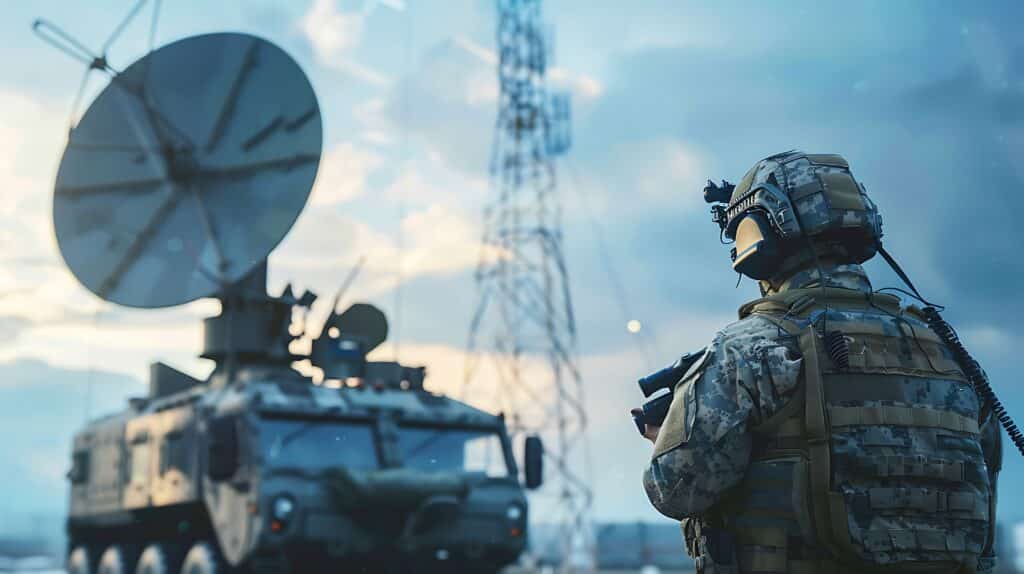How gamification can build cognitive resilience to complex crisis situations
- Cognitive resilience is the ability to keep a cool head, adapt and make better decisions in stressful situations and when faced with information overload.
- Traditional methods of training cognitive resilience have shown their limitations, and these tools need to be modernised to better prepare people.
- To do this, simulation and gamification enable more dynamic, interactive experiences that are closer to the current complex conditions of crises.
- Gamification provides a framework that stimulates cognitive complexity, forcing decisions to be made in uncertain environments.
- However, the development of these technologies raises ethical and deontological questions, such as data protection and the use of data without manipulative or conditioning abuses.
Faced with the acceleration of increasingly complex and uncertain international crises, the issue of cognitive resilience has become central. This concept, which refers to the ability to keep a cool head, adapt and make the best decisions in situations of stress, information overload and ambiguity, is now a major challenge for both military and civilian decision-makers.
Unfortunately, traditional training methods based on fixed procedures and relatively predictable scenarios are revealing their limitations. They do not sufficiently reflect the changing, sometimes chaotic reality in which actors must operate today. This is where simulation and gamification come into play, offering experiences that are more dynamic, interactive and, above all, closer to the real complexity of crises1.
The inadequacy of traditional simulations
Crisis management training has relied on simulators designed to reproduce fairly linear situations where outcomes are relatively predictable. This approach is effective when it comes to learning procedures or reflexes, but proves insufficient for preparing for hybrid crises, cyber crises, or asymmetric conflicts where information is incomplete, unclear, or even contradictory. What should be done if attacks simultaneously hit several vital infrastructures such as the energy2, telecommunications3 and information4 sectors?

Under these conditions, decision-making becomes a real cognitive challenge, influenced by mental load and emotions, as well as sometimes unconscious biases5. These essential human aspects are too often absent from traditional training, which limits its effectiveness in unpredictable situations6. It is therefore necessary to modernise the tools at our disposal in order to be better prepared.
Major powers at the forefront of cognitive technologies
To meet these challenges, several countries have developed innovative solutions. In the United States, for example, DARPA (Defense Advanced Research Projects Agency, a military technology research and development organisation) is focusing on immersive simulators that incorporate biometric sensors to measure operators’ cognitive load and emotional state in real time. This makes it possible to automatically adjust the difficulty of the exercises and offer personalised training7.
In China, the approach is even more ambitious, with the development of brain-machine interfaces aimed at directly increasing cognitive abilities, such as alertness or memory, in highly complex simulated environments8. In Europe, a more interdisciplinary approach is being taken, combining artificial intelligence, cognitive science and social analysis to better model human decision-making in crisis situations9. However, the integration of this research into training systems has yet to become widespread.
The development of these technologies raises ethical and professional conduct issues, such as data use and protection.
Nevertheless, the development of these technologies raises crucial ethical and deontological questions. It is imperative to guarantee data protection and ensure that these cognitive augmentation tools are used within a strict ethical framework, without manipulative or conditioning bias and in the interests of citizens, i.e. not exclusively for commercial or military purposes10.
Gamification: more than just a fun tool
Gamification is sometimes seen as a way to make learning more fun, but its potential goes far beyond that. When well designed, it provides a framework that simulates cognitive complexity, forcing participants to make decisions in uncertain environments, with consequences that can be unpredictable11. These serious games, particularly those offering multiple-branch scenarios, are effective training grounds for developing adaptability, stress management and decision-making under pressure12. In cyber crisis training, for example, their effectiveness has been confirmed by several studies13.

Furthermore, the integration of generative artificial intelligence into the design of these serious games paves the way for even more dynamic scenarios, where AI can generate events, characters or twists in real time, making each training session unique and requiring increased cognitive adaptability14.
French innovations: discreet but concrete work
Between 2022 and 2024, SRAT (System Risk Assessment and Technology) carried out several projects that perfectly illustrate this dynamic. The team developed a simulator based on the Unity engine, recreating a crisis management centre in a conflict zone where users’ decisions influence the course of events, thus introducing the notion of uncertainty and unpredictability. Coupled with an electroencephalography (EEG) interface, this simulator measures users’ cognitive load and emotions in real time, providing valuable feedback on their decision-making mechanisms. At the same time, SRAT worked on the C‑RAND project, a benchmark for emerging technologies in cyber-cognitive interfaces, in collaboration with the British Army. This work enabled the selection of the most suitable solutions for integration into training and operations systems15.
Another notable project is the development of a digital serious game in HTML, used to train both Master’s students and officers at the École Militaire Interarmes. This game simulates a cyber crisis with multiple ramifications, forcing players to manage information overload and make quick and relevant decisions. Feedback shows a significant improvement in adaptability and stress management skills16. Finally, SRAT has provided more than 100 hours of teaching; combining artificial intelligence, cognitive science and strategy within the Higher Military Scientific and Technical Education (EMSST), thus preparing future executives for the cognitive challenges of contemporary crises.
Simulation and gamification are strategic tools that can transform training and increase the cognitive resilience of decision-makers.
To maximise the impact of these tools on learner training, the role of debriefing and structured feedback is crucial. Post-simulation analysis, where the data collected (cognitive load, emotions, decisions) is used for personalised feedback, enables participants to understand their biases and integrate their learning in a lasting way.
Towards enhanced cognitive sovereignty
These different approaches clearly show that simulation and gamification are not mere gadgets, but strategic tools capable of transforming training and increasing the cognitive resilience of decision-makers. In a world where information is a lever of power and where the speed of decision-making can make the difference between success and failure, it is essential to strengthen this ability to adapt and make decisions under stress17. Cognitive sovereignty, like technological sovereignty, is now a matter of national security.
It is also important to consider that cognitive resilience is not solely the preserve of decision-makers; an approach open to every citizen would raise awareness and prepare a wider audience for the cognitive challenges of contemporary crises (disinformation, rumours, emergencies). In the current context of hybrid attacks aimed at spreading disinformation, stirring up hatred and breaking national cohesion, raising awareness is a powerful lever of resistance that needs to be developed.
But it is not just about technology. Cognitive resilience is a complex process that requires an integrated approach, combining technology, human understanding and appropriate education. The work of SRAT in France is leading the way, with a pragmatic, rigorous approach that is closely aligned with the real needs of the armed forces. The challenge now is to ensure the wider dissemination and adoption of these innovations, so that cognitive training becomes an operational reality and an asset in the management of tomorrow’s crises.
Simulation and gamification open up exciting prospects for meeting the challenge of cognitive resilience. More than ever, these tools must be seen as essential levers for preparing decision-makers for the complex and uncertain realities of modern crises. Combining technological advances with a human-centred approach is the key to building true cognitive sovereignty, guaranteeing efficiency and security in a rapidly changing world.
Eun S‑J., Eun J. K., Kim, JY., Artificial intelligence-based personalized serious game for enhancing the physical and cognitive abilities of the elderly, Future Generation Computer Systems, Volume 141, 2023, Pages 713–722, ISSN 0167–739X, https://doi.org/10.1016/j.future.2022.12.017↑
















